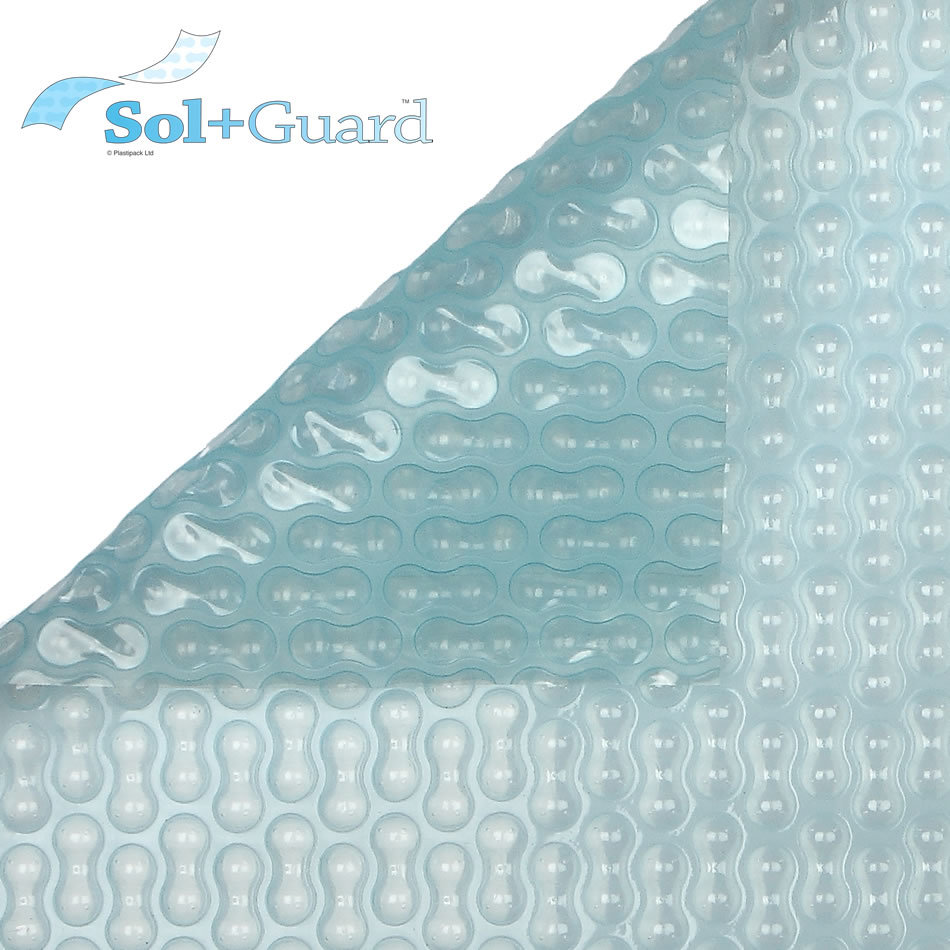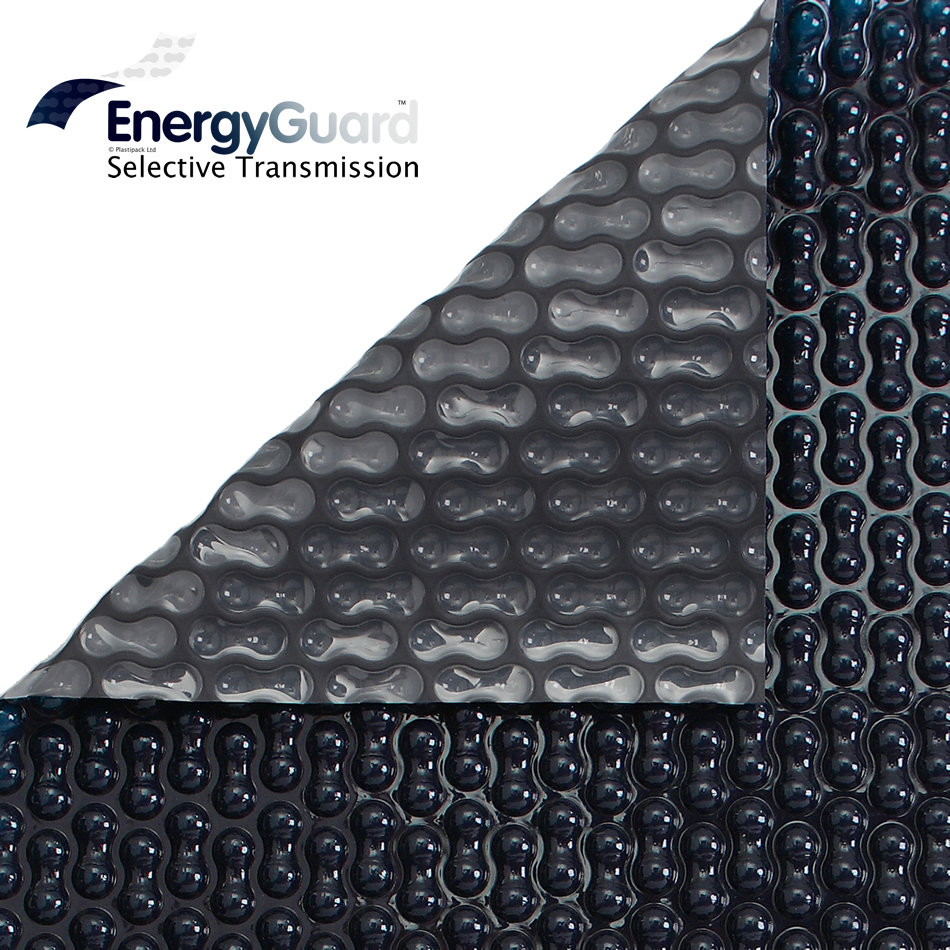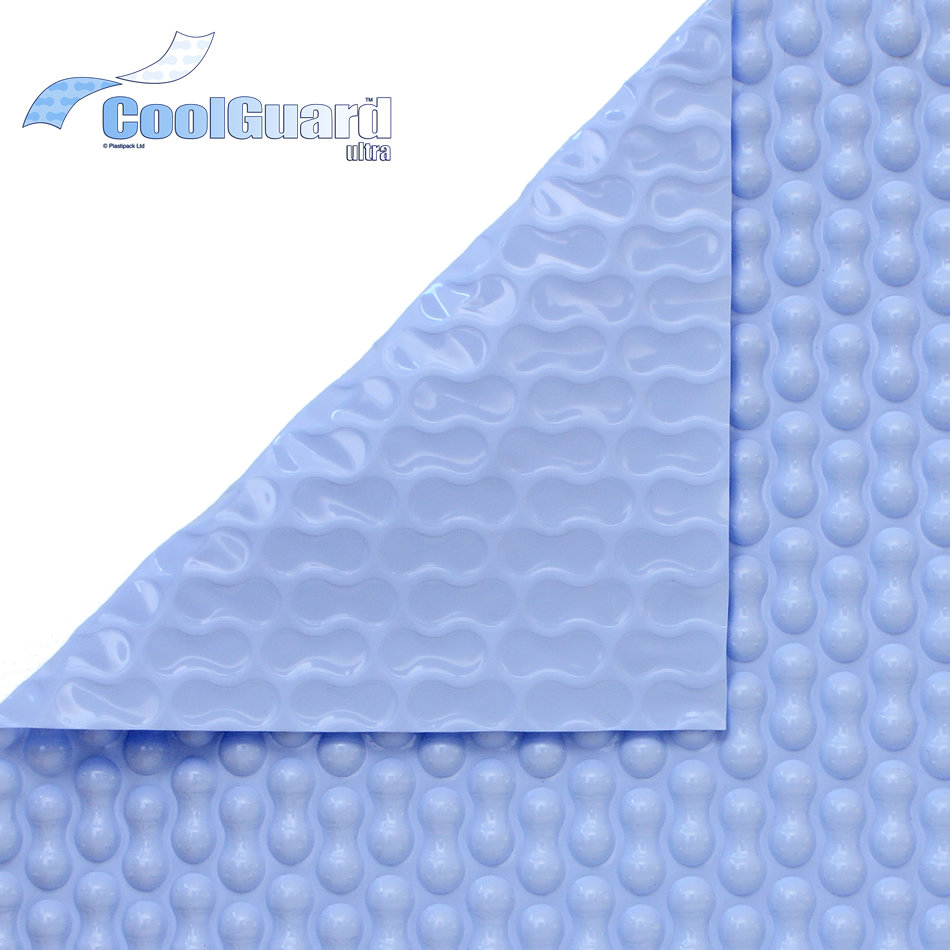Selecting the right cover for your pool – A buyer’s guide
When choosing a pool cover, the differences in thicknesses, colour, design and lifespan, can make this decision very difficult. So, we’ve put together this handy guide to choosing the right cover for your pool and your individual needs and hopefully steer you to your perfect cover.
Don’t worry as long as it’s covered!
By simply covering your pool you are preventing evaporation by over 98%, and stopping debris from entering the pool.
Environmental benefits aside, controlling evaporation will provide savings to your pool running costs, as well as an increase in temperature of the pool water. Stopping debris from entering the pool helps you maintain a pleasant swimming environment and also reduces the need for chemicals or filtration of the pool water, providing a further saving in terms of cost as well as your time.
All GeoBubble™ covers will:
- Eliminate water evaporation by 98%+
- Retain heat
- Reduce chemical consumption
- Reduce energy consumption
- Reduce debris contamination
- Reduce your pool’s carbon footprint
- Save you money
But which cover?
Once you’ve made the decision to cover your pool, the next step is to figure out what additional performance you want your cover to provide. This is determined by a number of factors, which we’ll talk you through below.
How thick should my bubble be? What’s a micron?
Pool cover materials are often classified by their grades, such as 400grade. The “grade” refers to the materials thickness in Microns (μ), so a 400grade material, will be 400 microns thick. To put this into perspective, the diameter of a human hair is between 50 and 100 microns.

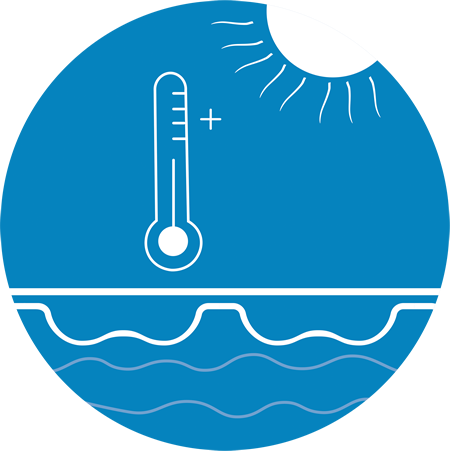

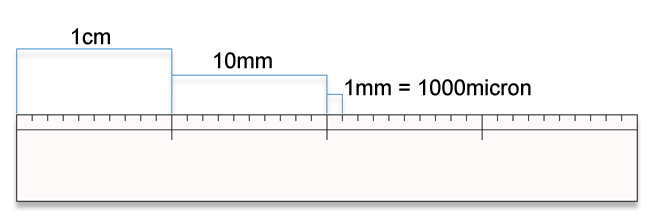
The thicker the better?
The thickness of a material is a good indicator of its quality and durability. Thicker materials will provide a greater resistance to the oxidising effects of the sanitizers within a pool, simply because there is more polymer to be oxidised over time. This has been further improved through the creation of the GeoBubble™ material design, where we ensure that the bubble is two thirds of the thickness of the material.
A good pool cover material should be no less than 400 microns, but bear in mind that if you’re not using a reel system, and are fan folding the cover off the pool, you may wish to go no thicker than 500 microns thick to keep the cover a manageable weight.
Though it does have an effect, thickness is not an indication of expected lifespan. You can find more details on material lifespans on our Product page.
Which bubble shape?
You’ll notice that traditional bubble covers will have a round bubble design, whereas GeoBubble™ covers have a unique bubble design made up of two domed bubbles with a connecting structural arch.
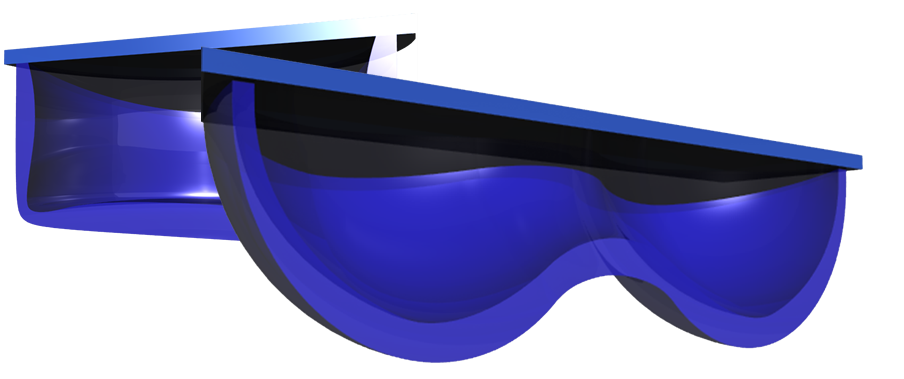
The round bubble design was created for the packaging industry and has inherent weaknesses, including thin points and high residual stress areas.
In a typical swimming pool environment, thin points on a bubble become a significant problem, as they are broken down by high levels of UV radiation and chemical attack. This results in the bubble material breaking down and will ultimately cause the premature failure of the pool cover.
GeoBubble™ is a material designed specifically for the swimming pool environment, making the cover more resistant to these attacks and enabling a longer lifespan.
Discover more about the story of the GeoBubble™ here.
Colour – is it just an aesthetic choice?
Not at all. Colour and opacity can and do have an effect on performance.
Most standard pool cover materials will fall under one of two categories in terms of how they heat the pool:
Absorption covers: Use dark colouring to absorb the sun’s energy and pass this to the top surface of the pool.
Good for: Algae inhibition
Bad for: Limited heating efficiency
Transmission covers: Transparent materials that allow the sun’s energy to pass through the covers to heat the pool directly (See more on our Sol+Guard™ cover here).
Good for: Strong heating efficiency
Bad for: Poor algae inhibition
Our award winning EnergyGuard™ Selective Transmission uses a special combination of both of these to bring you the best of both worlds, bringing excellent solar gains, as well as prohibiting algae.
Our CoolGuard™ Ultra material’s highly reflective, opaque top surface ensures that solar energy is reflected away from the cover and the water, ensuring a cooler, more refreshing swimming environment.
The new RaeGuard™ swimming pool cover material improves insulation properties by reflecting heat radiated from the pool heat back reducing heat losses. Using two reflective pigments a white bubble and a silver top surface. These pigments have been tailored to optimise reflection in the mid IR reducing heat loss.
How long will my cover last?
A cover will last longer provided it’s well looked after. The lifespans given below are based on the assumption that the pool is kept within the industry recognised balance and that the cover is removed when shock dosing a pool with chlorine and only replaced once the pool has returned to a chlorine level of 2-4 parts per million (ppm).
The lifespan of a material is also determined by its UV stabilisation package, this is tailored to the geographic requirements of the environment.
Standard materials
400 micron – 4 years+
400 micron + weave – 4 years+
500 micron – 5 years+
600 micron – 5 years+
High Performance Guard materials
Sol+Guard™ – 8 years+
CoolGuard™ Ultra – 8 years+
EnergyGuard™ Selective Transmission – 8 years+
RaeGuard™ – 8 years+
Why should I choose a Guard material cover for my pool?
Each of our high performance materials is designed and tested to provide the highest performance for their specific function as well as the generic benefits all pool covers provide.
Each of the Guard products were designed with the aim of returning the initial investment of their purchase by providing savings to the pool within the first year of use. Each of the High performance Guard materials has an expected lifespan of 8 years +
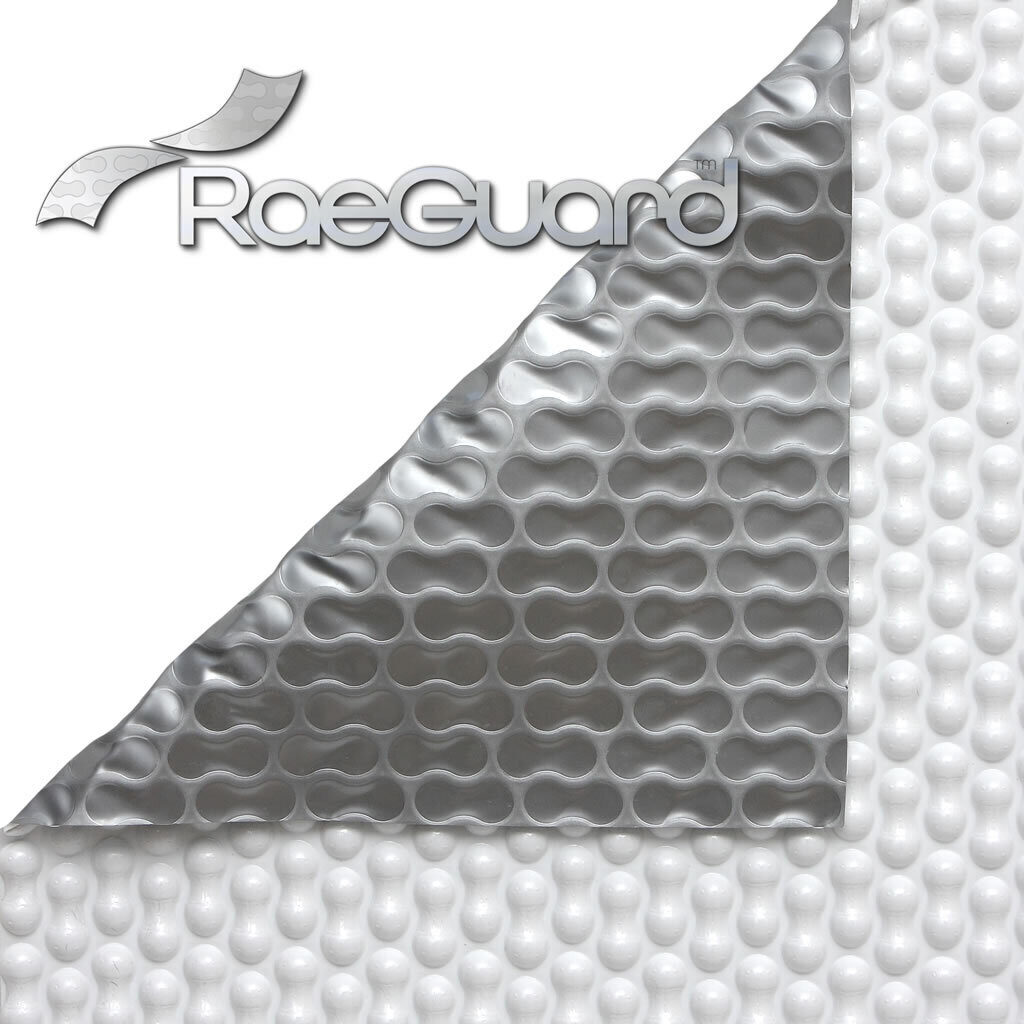
RaeGuard™ –
The best new pool cover for heat retention
Why you should consider covering your cover – overheating on the reel system
GeoBubble™ Covers are designed to heat the water and insulate your pool to keep the heat in. When left uncovered and exposed on the reel system, this solar heating ability results in a rapid elevation in temperature at the centre of the roll. Tests have found temperatures of up to 80˚C at the roll’s core. This can cause bands of poor lay flat to form on the cover when laid across the pool – you’ll see that these bands increase in frequency as they get closer to the reel system, or if the cover has been fan folded, you’ll see these bands on the folding edges.
GeoBubble™ covers are made from Polyethylene (PE), which is a thermoplastic. This means that it becomes malleable as the cover reaches its Vicat softening point (90°C). As your cover then cools, the material sets to the shape of the reel, resulting in the poor lay flat on your pool. In extreme cases covers can even oxidise or weld layers of the cover material together.
This issue can be easily avoided by simply covering your covering with a reflective sheeting. This will reflect the sun away from your cover, reducing the solar heating. Ask your supplier about our Reflective sheet.

















